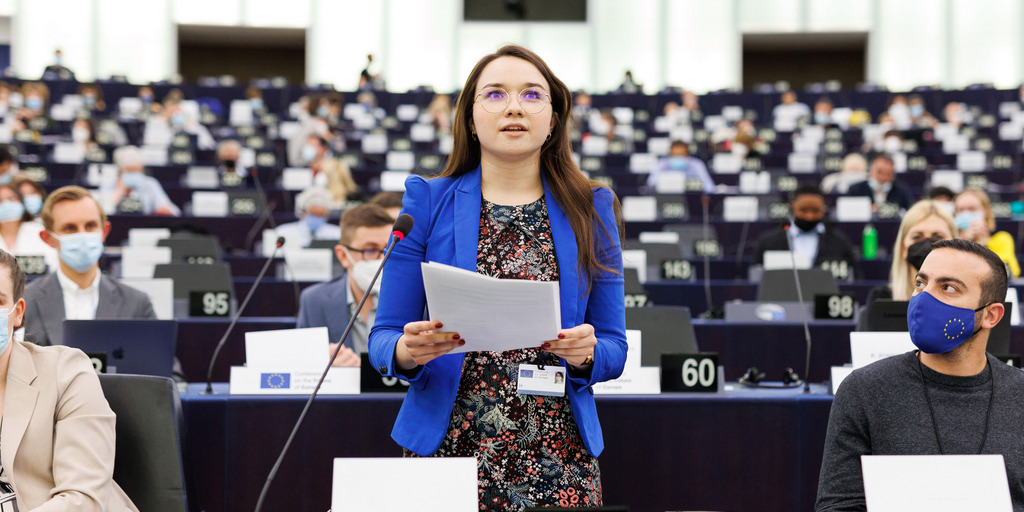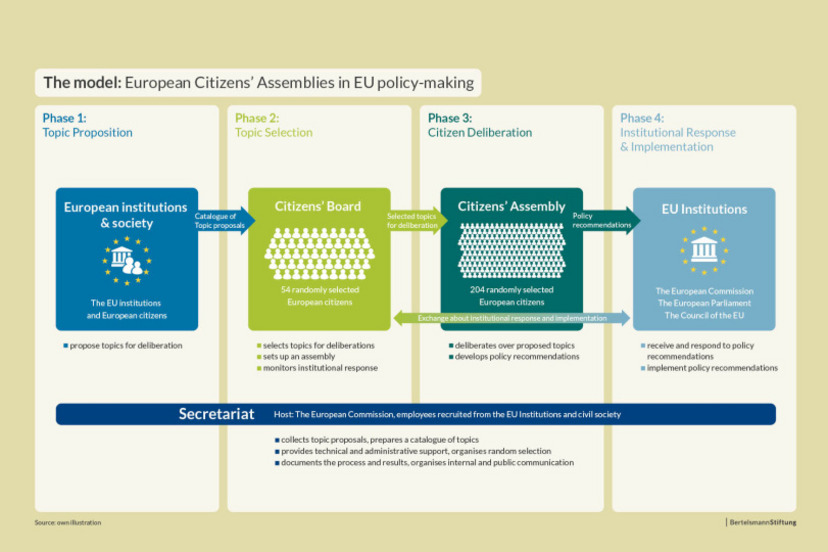Citizens’ assemblies have gained popularity worldwide as instruments of effective and meaningful citizen participation. Randomly selected citizens come together, deliberate over the course of several weeks, and develop political recommendations together. In the complex transnational context of EU policy-making, citizens’ assemblies can bring citizens and policy-makers closer, promote truly transnational political debates and improve the quality of the EU democracy and policies.
But how could citizens’ assemblies be introduced into the EU legal and institutional framework and its policy processes? What functions should citizens’ assemblies perform and how should their work be organised to ensure they are democratic, well-functioning and effective instruments of policy-making and citizen participation in the EU?
Together with leading EU democracy experts we have developed a model for the institutionalisation of European Citizens’ Assemblies. It would make the EU a frontrunner in innovative citizen participation and reduce the often-quoted gap between Brussels and its citizens.
In our publication we put forward a concrete proposal. We describe the main bodies and the functioning of European Citizens’ Assemblies and show how they can be connected to EU policy-making process. Our proposal is a definite response to the lessons from the Conference on the Future of Europe. It draws on the experience of the Conference’s European Citizens’ Panels by proposing a format that would make this experience permanent and more impactful.





